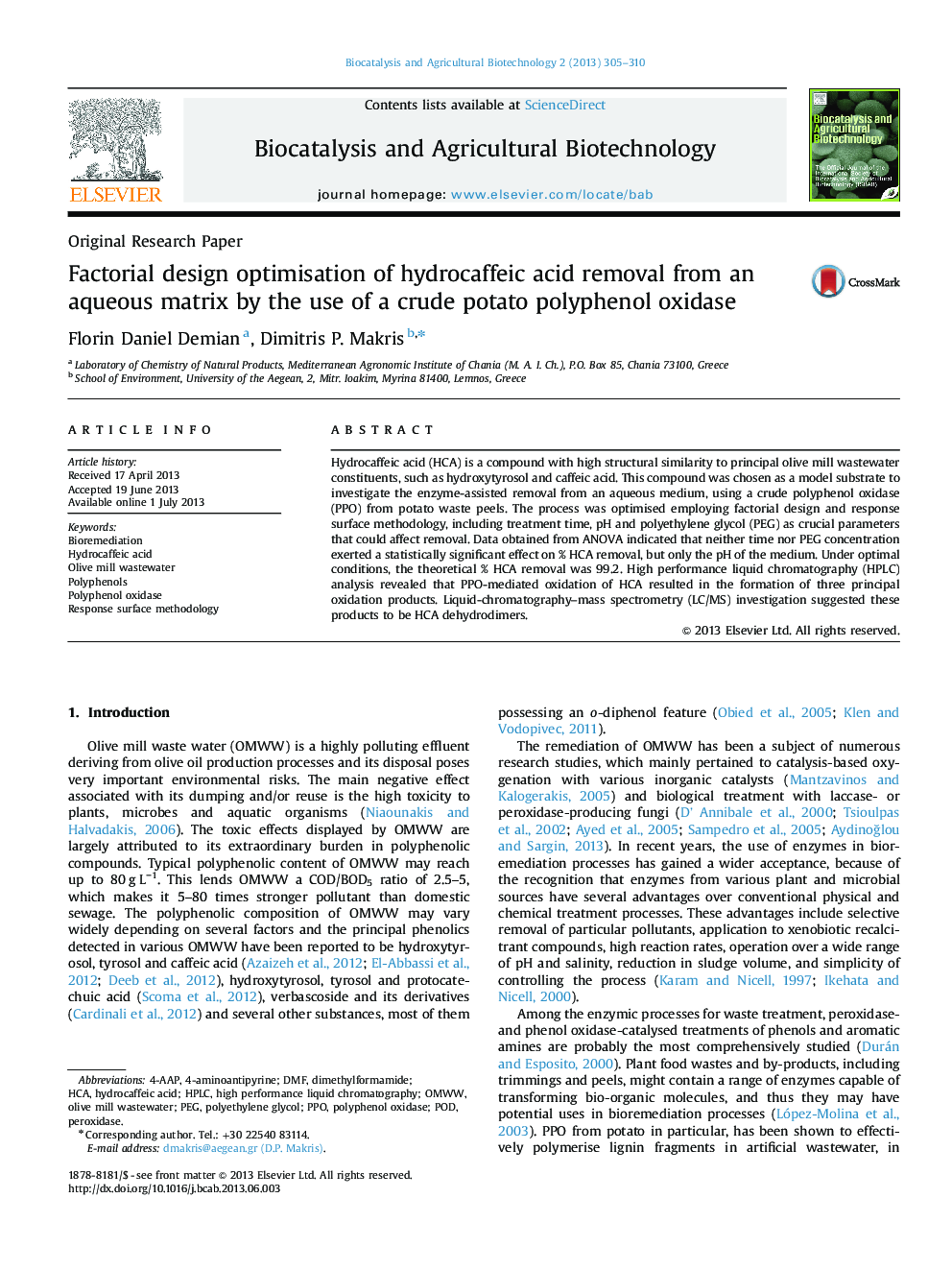| Article ID | Journal | Published Year | Pages | File Type |
|---|---|---|---|---|
| 2075670 | Biocatalysis and Agricultural Biotechnology | 2013 | 6 Pages |
Hydrocaffeic acid (HCA) is a compound with high structural similarity to principal olive mill wastewater constituents, such as hydroxytyrosol and caffeic acid. This compound was chosen as a model substrate to investigate the enzyme-assisted removal from an aqueous medium, using a crude polyphenol oxidase (PPO) from potato waste peels. The process was optimised employing factorial design and response surface methodology, including treatment time, pH and polyethylene glycol (PEG) as crucial parameters that could affect removal. Data obtained from ANOVA indicated that neither time nor PEG concentration exerted a statistically significant effect on % HCA removal, but only the pH of the medium. Under optimal conditions, the theoretical % HCA removal was 99.2. High performance liquid chromatography (HPLC) analysis revealed that PPO-mediated oxidation of HCA resulted in the formation of three principal oxidation products. Liquid-chromatography–mass spectrometry (LC/MS) investigation suggested these products to be HCA dehydrodimers.
